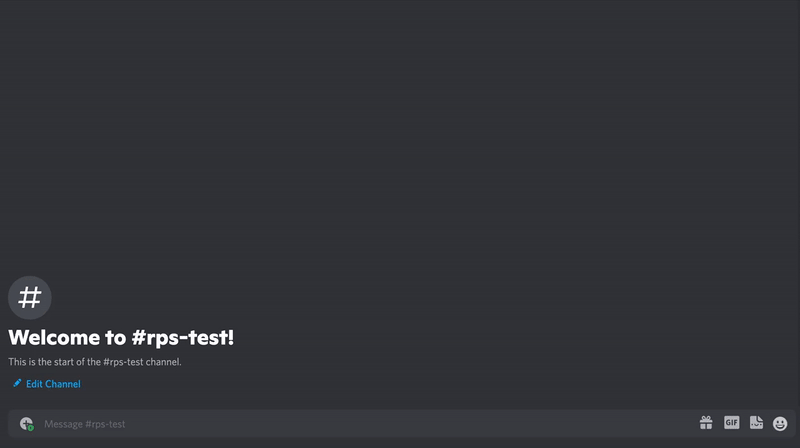This project was copied from a basic rock-paper-scissors-style Discord app written in JavaScript, built for the getting started guide.
✨ A version of this code is also hosted on Glitch 🎏 and on Replit 🌀
Below is a basic overview of the project structure:
├── examples -> short, feature-specific sample apps
│ ├── button.js
│ ├── command.js
│ ├── modal.js
│ ├── selectMenu.js
├── .env.sample -> sample .env file
├── app.js -> main entrypoint for app
├── commands.js -> slash command payloads + helpers
├── game.js -> logic specific to RPS
├── utils.js -> utility functions and enums
├── package.json
├── README.md
└── .gitignore
Before you start, you'll need to create a Discord app with the proper permissions:
applications.commandsbot(with Send Messages enabled)
Configuring the app is covered in detail in the getting started guide.
First clone the project:
git clone https://github.com/discord/discord-example-app.git
Then navigate to its directory and install dependencies:
cd discord-example-app
npm install
Fetch the credentials from your app's settings and add them to a .env file (see .env.sample for an example). You'll need your app ID (APP_ID), server ID (GUILD_ID), bot token (DISCORD_TOKEN), and public key (PUBLIC_KEY).
Fetching credentials is covered in detail in the getting started guide.
🔑 Environment variables can be added to the
.envfile in Glitch or when developing locally, and in the Secrets tab in Replit (the lock icon on the left).
After your credentials are added, go ahead and run the app:
node app.js
⚙️ A package like
nodemon, which watches for local changes and restarts your app, may be helpful while locally developing.
The project needs a public endpoint where Discord can send requests. To develop and test locally, you can use something like ngrok to tunnel HTTP traffic.
Install ngrok if you haven't already, then start listening on port 3000:
ngrok http 3000
You should see your connection open:
Tunnel Status online
Version 2.0/2.0
Web Interface http://127.0.0.1:4040
Forwarding http://1234-someurl.ngrok.io -> localhost:3000
Forwarding https://1234-someurl.ngrok.io -> localhost:3000
Connections ttl opn rt1 rt5 p50 p90
0 0 0.00 0.00 0.00 0.00
Copy the forwarding address that starts with https, in this case https://1234-someurl.ngrok.io, then go to your app's settings.
On the General Information tab, there will be an Interactions Endpoint URL. Paste your ngrok address there, and append /interactions to it (https://1234-someurl.ngrok.io/interactions in the example).
Click Save Changes, and your app should be ready to run 🚀
- Read the documentation for in-depth information about API features.
- Browse the
examples/folder in this project for smaller, feature-specific code examples - Join the Discord Developers server to ask questions about the API, attend events hosted by the Discord API team, and interact with other devs.
- Check out community resources for language-specific tools maintained by community members.
